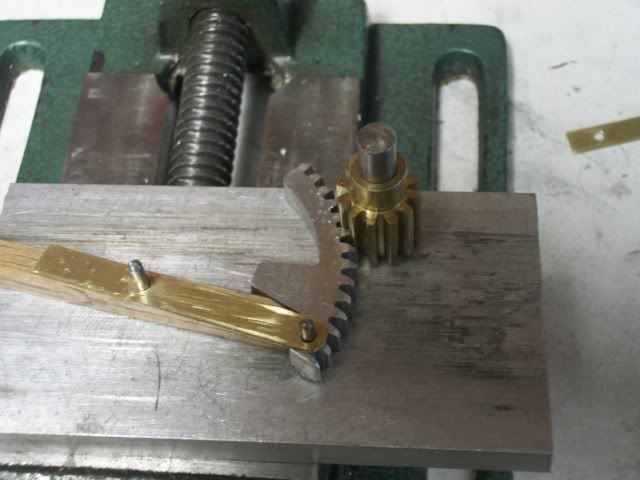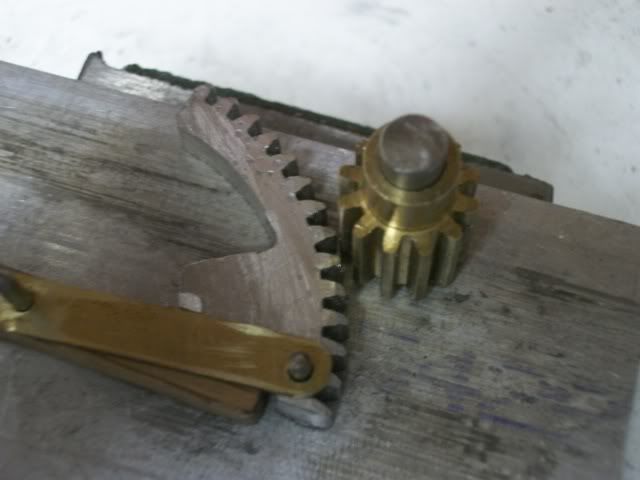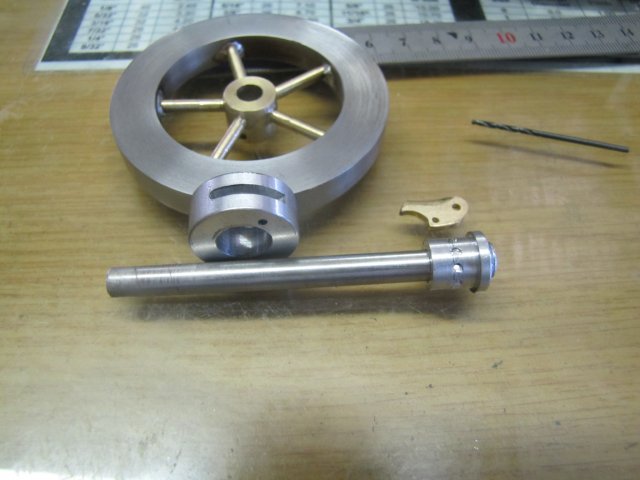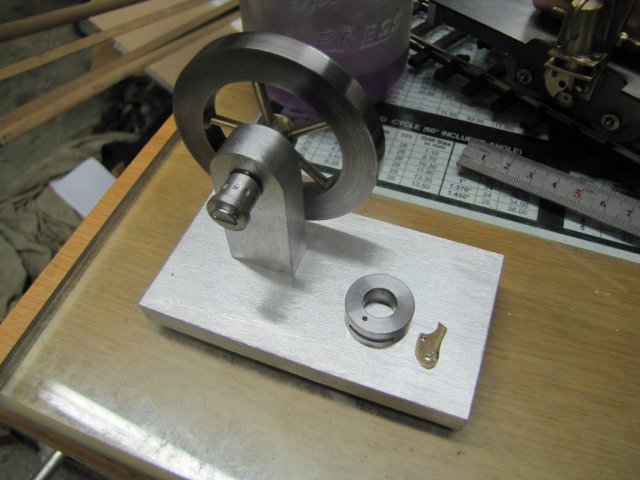- Joined
- Dec 2, 2008
- Messages
- 971
- Reaction score
- 8
Hi All!
This is an offshoot from an older thread from 2008 that got revived because of a more current thread about finger engines. I thought it more appropriate to start a new thread because it has taken a different course. The parent thread can be found at
http://www.homemodelenginemachinist.com/index.php?topic=2063
It is worth the time to take a moment to read that thread if you haven't already.
This thread is aimed at building a finger engine that uses a clutch or other method to decouple the finger treadle from the flywheel so that the flywheel will continue to freewheel after treadle action stops.
There have been a few ideas and suggestions offered. So far only Arnold and I have jumped in, but there is plenty of room for everybody. The rules are simple. The above paragraph is all there is.
Arnold thought that he would get some shop time on it today and so did I. My shop time was spent mostly looking through the pile of discarded parts from other projects. I found what I was looking for and cobbled up a mock up as shown here:

It make take some imagination to understand. Imagine that the small pinion is on a shaft with a flywheel. When the free end of the treadle is depressed with a finger, the gear segment pivots on its bottom pivot pin and is forced into mesh with the pinion and drive it clockwise. At the end of the power stroke, the gear segment pivots out of mesh with the pinion and is returned to the lower position by a spring. The process repeats.

Position, clearances, springs, stops have still to be worked out, but that for tomorrow ( or later)
Arnold, how did you make out?
Jerry
This is an offshoot from an older thread from 2008 that got revived because of a more current thread about finger engines. I thought it more appropriate to start a new thread because it has taken a different course. The parent thread can be found at
http://www.homemodelenginemachinist.com/index.php?topic=2063
It is worth the time to take a moment to read that thread if you haven't already.
This thread is aimed at building a finger engine that uses a clutch or other method to decouple the finger treadle from the flywheel so that the flywheel will continue to freewheel after treadle action stops.
There have been a few ideas and suggestions offered. So far only Arnold and I have jumped in, but there is plenty of room for everybody. The rules are simple. The above paragraph is all there is.
Arnold thought that he would get some shop time on it today and so did I. My shop time was spent mostly looking through the pile of discarded parts from other projects. I found what I was looking for and cobbled up a mock up as shown here:

It make take some imagination to understand. Imagine that the small pinion is on a shaft with a flywheel. When the free end of the treadle is depressed with a finger, the gear segment pivots on its bottom pivot pin and is forced into mesh with the pinion and drive it clockwise. At the end of the power stroke, the gear segment pivots out of mesh with the pinion and is returned to the lower position by a spring. The process repeats.

Position, clearances, springs, stops have still to be worked out, but that for tomorrow ( or later)
Arnold, how did you make out?
Jerry









